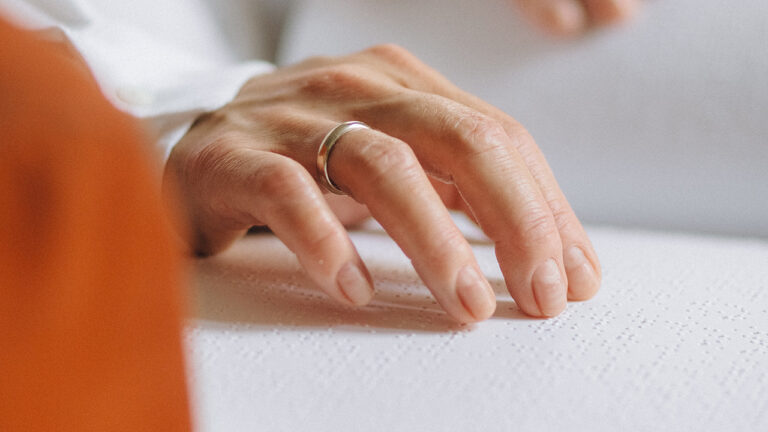Early intervention with blind or visually impaired children helps establish a foundation for future learning. Resources for visually impaired children can aid a blind child in five crucial areas:
-
Developing ideas, concepts, and knowledge
-
Communication
-
Physical development
-
Adaptive development
-
Social and emotional development
With the pandemic still forcing some to remain at home, you might be running out of things to do if you have a child with low or no vision. Here are suggestions to help quell boredom and stimulate excitement.
Watch movies and shows.
Watching movies and television shows through numerous streaming services can provide hours of entertainment. Make sure the audio description feature is enabled. If you have very young children, Disney+ has over 300 movies and shows where the action is described.
Engage their senses to encourage play and imagination.
Make jewelry by stringing beads or braiding thread. Expose them to woodwork. Show your child how to build a small stool or statue. Knit or crochet gifts for friends and loved ones.
Buy some play dough, or better yet, make your own. Make candles or a paper mache replica of a pet or your child’s favorite animal.
Play games.
Card and board games can be fun and educational resources for visually impaired children. Several online retailers sell UNO and Go Fish braille cards. The same can be said for buying braille Scrabble or Monopoly.
If screen time is more your kid’s thing, there are plenty of accessible video games available. Here is a list of educational games for the iPhone or iPad.
Have some fun in the kitchen.
Let your children get messy in the kitchen. Baking and decorating cookies and cakes with their siblings or friends can be a neat way to pass the time. If they have braille measuring cups and spoons, teach them how to measure ingredients correctly. Making bread can be both a sensory experience and scientific experiment—smelling the yeast as it is activated; getting your hands in the dough, stretching, punching, and kneading it; feeling it after it has proofed; anticipating that first taste of warm bread fresh from the oven slathered with butter or jam.
Start a garden.
The changing of the seasons brings nicer weather. Spring is a great time to prep your garden for planting. It’s also an opportune time to let your child get their hands in the fresh earth, planting seeds or flowers and harvesting what they’ve grown.
You can also start an indoor garden by planting seedlings in egg cartons before transferring them to pots. Herb gardens also do well indoors. They can be kept out of the way on window sills where light and fresh air can reach them.
Read books.
Cookbooks and other texts can be ordered online if your child reads braille. Better still, if they have a free membership to the National Library Service for the Blind, they can download them. Bookshare also allows members to download books in physical or electronic braille or through a Daisy reader.
Get outside.
Like spending time outdoors? Take a hike through the woods or strap your child in the seat on the back of your bike. Be sure to describe what you’re passing and what people are doing around you so they can fully enjoy the ride. Let them feel different rocks, plants, feathers, and trees – but be mindful of poison ivy.
To help people gain independence and expose them to different experiences, Outlook Enrichment hosts several monthly events to provide resources for visually impaired children. Virtual board game night and our tandem bike-riding club are just two upcoming events you might enjoy.
Since children with little or no vision need different activities to stimulate their senses, starting early by exposing them to experiences is an excellent way to teach and show them our ever-changing and fantastic world. Unlike sighted children, you can’t hand them their iPads and keep them engaged for hours. Get creative. There’s always something fun you can do. Keep this post handy if you run short on ideas.


